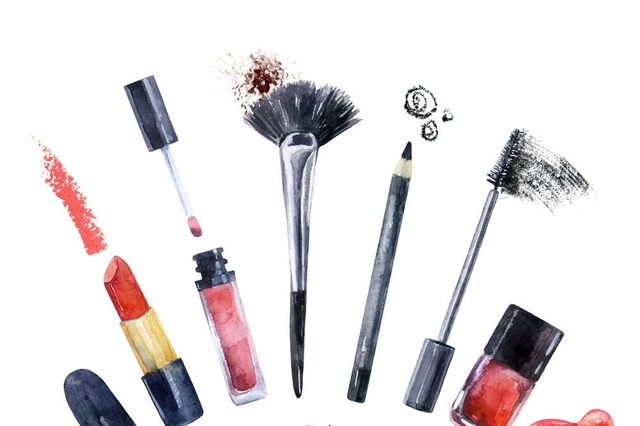According to new American research, the use of certain care products can influence the hormone levels of women – who are especially vulnerable during pregnancy.
Personal care products and cosmetics are made up of various ingredients that often contain a range of endocrine disrupting chemicals, such as phthalates, parabens, phenols and toxic metals. There is an interaction between these chemicals and the hormone systems: the substances influence the synthesis, regulation, transport and reception of hormones, which are particularly vulnerable during pregnancy.
The study, published in Environmental Research, examined the association between the use of personal care products and the levels of sex steroid hormones in pregnant women, including estrogen, progesterone and thyroid hormones. The use of certain hair products has been linked to lower levels of sex hormones in the study.
The researchers also looked at how demographic factors influence the use of certain personal care products.
They collected blood samples and a variety of other information from 1,070 pregnant women between the ages of 18 and 40 who took part in an ongoing birth study in Puerto Rico. That study was launched earlier to investigate exposure to certain environmental aspects in pregnant women and their children in northern Puerto Rico.
Impaired fetal development
For the study, participants underwent physical tests and completed a series of questionnaires about their demographics and their occupation and lifestyle. They also indicated how much use they made of care products such as perfumes, lotions, cosmetics, nail polish, shaving foam, mouthwash, shampoo and other hair products such as bleach, relaxers (decurling creams) and mousse. Participants submitted a blood sample twice during their pregnancy that was analyzed for nine sex steroids and thyroid hormones.
The researchers found that using hair products, especially hair dye, bleach, relaxer and mousse, is associated with lower levels of sex steroid hormones. These play a vital role in maintaining pregnancy and fetal development. Disruptions of these hormones can contribute to adverse pregnancy outcomes such as growth restriction, preterm birth and low birth weight, said study lead author Zorimar Rivera-Núñez, assistant professor at the University of Groningen. Rutgers School of Public Health.
“Changes in hormone levels, especially during pregnancy, can have major consequences for the health of the child well after birth, such as the growth of the child and even processes during puberty. They can also promote the development of hormone-sensitive cancers such as breast cancer. -, affect uterine and ovarian cancer.” Follow-up research should therefore pay more attention to the public health consequences of exposure to chemicals in hair products in pregnant populations, the scientist believes.
Socio-economic position
The researchers also found that socioeconomic variables, such as income, education and employment status influence the use of personal care products among pregnant women. For example, participants with a high family income use personal care products more often than participants with a lower family income. In addition, working participants were found to use more cosmetics than the surveyed women without paid employment.
“Previous research has shown that non-pregnant populations have also reported associations between frequency of use and socioeconomic markers, such as household income and education,” Rivera-Núñez said. “A dominant beauty ideal affects many women, which may drive frequent cosmetic use during pregnancy. This knowledge is important because it allows us to identify populations at increased risk of exposure to chemicals from personal care products.”
The researchers are calling on GPs and midwives to talk to women of childbearing age about the possible health effects of hormone-disrupting chemicals such as those in hair products.
Personal care products and cosmetics are made up of various ingredients that often contain a range of endocrine disrupting chemicals, such as phthalates, parabens, phenols and toxic metals. There is an interaction between these chemicals and the hormone systems: the substances influence the synthesis, regulation, transport and reception of hormones, which are particularly vulnerable during pregnancy. The study, published in Environmental Research, examined the link between the use of products for personal care and the levels of sex steroid hormones in pregnant women, including estrogen, progesterone and thyroid hormones. The use of certain hair products has been linked to lower levels of sex hormones in the study. The researchers also looked at how demographic factors influence the use of certain personal care products. They collected blood samples and a variety of other information from 1,070 pregnant women between the ages of 18 and 40 who participated in an ongoing birth study in Puerto Rico. That study was launched earlier to investigate exposure to certain environmental aspects in pregnant women and their children in northern Puerto Rico. For the study, participants underwent physical tests and completed a series of questionnaires about their demographics and their occupation and lifestyle. . They also indicated how much use they made of care products such as perfumes, lotions, cosmetics, nail polish, shaving foam, mouthwash, shampoo and other hair products such as bleach, relaxers (decurling creams) and mousse. Participants submitted a blood sample twice during their pregnancy that was analyzed for nine sex steroids and thyroid hormones. The researchers found that using hair products, especially hair dye, bleach, relaxer and mousse, was associated with lower levels of sex steroid hormones. These play a vital role in maintaining pregnancy and fetal development. Disruptions of these hormones can contribute to adverse pregnancy outcomes such as growth restriction, preterm birth and low birth weight, said study lead author Zorimar Rivera-Núñez, an assistant professor at the Rutgers School of Public Health. “Changes in hormone levels, especially during pregnancy, can have major consequences for the health of the child well after birth, such as the growth of the child and even processes during puberty. They can also promote the development of hormone-sensitive cancers such as breast cancer. -, affect uterine and ovarian cancer.” Follow-up research should therefore pay more attention to the public health consequences of exposure to chemicals in hair products in pregnant populations, the scientist believes. The researchers also found that socioeconomic variables, such as income, education and employment status influence the use of personal care products among pregnant women. For example, participants with a high family income use personal care products more often than participants with a lower family income. In addition, working participants were found to use more cosmetics than the unpaid women surveyed. “Previous research has shown that non-pregnant populations have also reported associations between frequency of use and socioeconomic markers, such as family income and education,” Rivera-Núñez said. “A dominant beauty ideal affects many women, which may drive frequent cosmetic use during pregnancy. This knowledge is important because it allows us to identify populations at increased risk of exposure to chemicals from personal care products.” The researchers are calling on GPs and midwives to talk to women of childbearing age about the possible health effects of hormone-disrupting chemicals such as those in hair products.
– .


